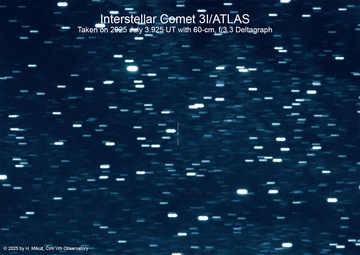Welcome to COBS!
Comet Observation database (COBS) saw first light in 2010 and is maintained by Crni Vrh Observatory. It is a free and unique service for comet observers worldwide which allows submission, display and analysis of comet data in a single location.
Amateur astronomers can make valuable contributions to comet science by observing comets and submitting their observations to COBS as professional astronomers typically do not have telescope time required to acquire regular observations. We therefore encourage comet observers worldwide to submit their observations and contribute to the COBS database.
Registered observers may submit observations using a web based form which stores the observations in an SQL database and stores them in ICQ format. Observations may be queried and plotted in the website or exported for further processing, analysis and publication. The database currently contains more than 290900 comet observations of more than 1680 different comets and represents the largest available database of comet observations.
The data stored in COBS is freely available to everyone who honors our data usage policy. Please cite COBS as the reference if you use it for comet studies.
Comets visible today at Crni Vrh Observatory
| Comet | Mag | T | Source | Best time | Const | Obs | Chart | Comet PK | Comet MPC | Type | MPC name |
|---|
Location: Crni Vrh Observatory
Latitude: 45.94583; longitude: 14.07111; elevation: 726.0
Limiting mag: 15; Min altitude: 0; Min solar elong: 0; Min moon elong: 0
All times are in UTCComet finding charts provided by Dominic Ford: https://in-the-sky.org/
Lightcurve of comet C/2024 E1 (Wierzchos)
Recent observations
| Type | Comet | Obs date | Meth | Mag | T | App | P | Dia | DC | Tail | Tail unit | PA | User | Pk |
|---|
Latest news
This interstellar comet may be a frozen relic from before the Sun
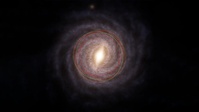
A newly discovered comet, 3I/ATLAS, may be the most ancient visitor ever detected, potentially older than our solar system itself. Unlike previous interstellar objects, this ice-rich comet seems to originate from the thick disk of the Milky Way, a region filled with ancient stars. First spotted in July 2025, it’s already showing signs of activity and could help scientists understand more about galactic chemistry and the origins of planetary systems.
Tycho Tracker: A comperhensive all‐in‐one tool for Comet photometry
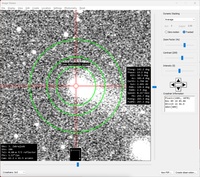
In the latest issue of The Comet's Tail, the British Astronomical Association (BAA) highlights "Tycho Tracker: A Comprehensive All-in-One Tool for Comet Photometry," an article detailing a significant advancement in comet observation technology. Tycho Tracker emerges as a powerful software solution, streamlining the process of comet photometry for both amateur and professional astronomers.
More in recent issue of The Comet's Tale: https://britastro.org/wp-content/uploads/2015/11/tail43.pdf
Good News and bad News about Comet Atlas
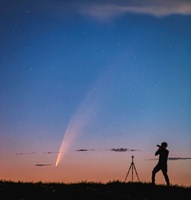
Astrophysicists reveal structure of 74 exocomet belts orbiting nearby stars in landmark survey
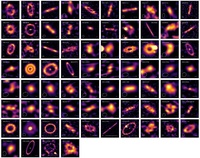
Astrophysicists led by a team from Trinity College Dublin have -- for the first time -- imaged a large number of exocomet belts around nearby stars, and the tiny pebbles within them. The crystal-clear images show light being emitted from these millimetre-sized pebbles within the belts that orbit 74 nearby stars of a wide variety of ages -- from those that are just emerging from birth to those in more mature systems like our own Solar System.
Sungrazing comet at dawn

